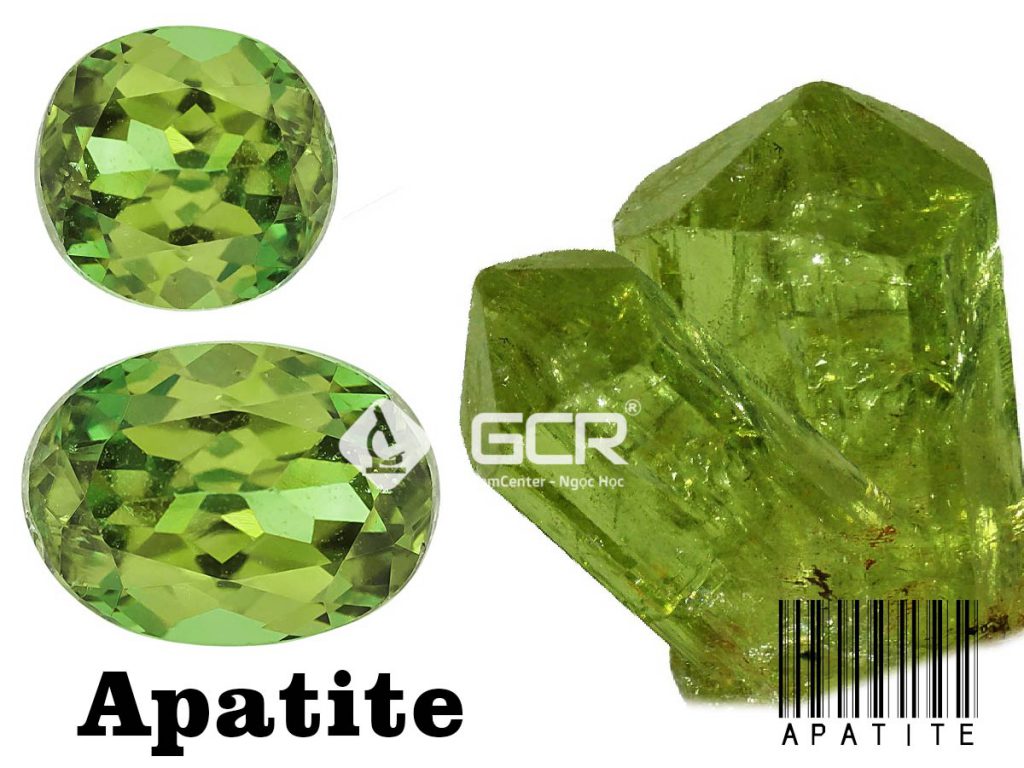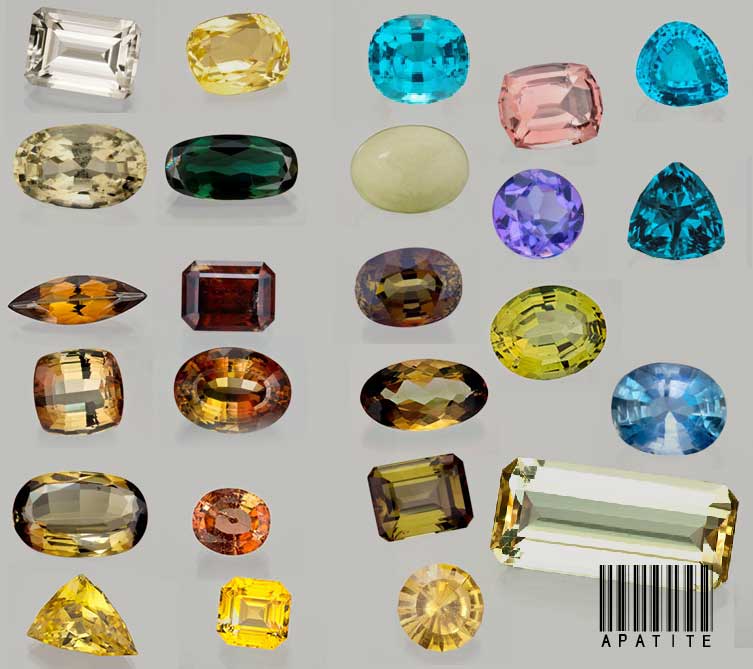Apatite is the name for a mineral group as well as the generic term for many phosphates, but gem-quality apatite is a special gemstone found in a beautiful variety of colors. Apatite’s various colors are often due to the presence of rare earth elements or natural irradiation. Because of its wide color range, apatite has often been mistaken for many other gemstones, including topaz, tourmaline, and various beryl varieties. Particularly rare in sizes over one carat, apatite is a relatively soft gem and when used in jewelry manufacture, is often set into more protective mountings that capture light yet safely display its beauty. The long-established sources for gem-quality apatite are Brazil and Mexico, but more recent African discoveries have thrust it into the spotlight once again.

History
The Caribbean blues and greens we associate with gem-quality apatite give it cool, easy appeal. Even the yellow shades have undertones that resonate on the cool side of the color wheel. The variety of colors of apatite make it a desirable stone for jewelry. It’s a 5 on the Mohs scale and should be treated with care and as a special-occasion stone. Consider it like a fine gown, store it carefully and wear it when the event calls for something truly special. Gem-quality apatite is a unique stone whose various colors are often due to the presence of rare-earth elements or natural irradiation. Apatite cat’s-eye is highly sought-after and seldom found. It exhibits chatoyancy that is best displayed in a cabochon cut. Consider created apatite as an alternative to the mother-earth stone. It’s hard, very wearable and perfect for those who want to enjoy its enticing colors every day.
Apatite Classification
| Common Name | Apatite |
| Species | Apatite |
Apatite Optical Properties
| Transparency | Transparent – Translucent |
| Dispersion | Strength: Weak Fire Value: 0.013 |
| Refractive Index | 1.634-1.638 Tolerance:(+0.012/-0.006) |
| Birefringence | 0.002-0.008 |
| Optic Character | Uniaxial |
| Optic Sign | Negative |
| Polariscope Reaction | Doubly Refractive (DR) |
| Fluorescence | SWUV: Variable LWUV: Variable |
| Pleochroism | Dichroic, strong blue and yellow (in blue gems) and in other colors, weak to very weak tones of bodycolor |
Apatite Characteristic Physical Properties
| Hardness | 5 |
| Streak | White To Yellow-Gray |
| Specific Gravity | 3.130-3.230 Range:+/- 0.05 |
| Toughness | Fair |
| Inclusions | Apatite is a type II stone. The stones are often found with natural inclusions, healing cracks and hollow tubes. |
| Luster | Vitreous |
| Stability | Fair |
| Fracture | Conchoidal, Uneven |
| Cleavage | Poor, in two directions |
Apatite Chemistry & Crystallography
| Chemical Name | calcium phosphate with fluorine, chlorine or hydroxyl group |
| Chemical Formula | Ca5(PO4)3(F,OH,Cl) |
| Crystal System | Hexagonal |
| Chemistry Classification | Phosphate |
Countries of Origin
Tanzania, United Republic Of; Colombia; Myanmar; Afghanistan; Czechia; Sri Lanka; Dominican Republic (the); Madagascar; Kenya; French Polynesia; India; Canada; Mozambique; Pakistan; Morocco; Unknown; China; Namibia; Russian Federation (the); Brazil; Mexico; Zimbabwe; Nigeria
More About Apatite
Some people believe that apatite is an inspirational stone that contributes to learning. There are many qualities attributed to it by those who subscribe to the metaphysical. One of our favorites is the idea that apatite can suppress hunger. We subscribe to believe in the qualities of beauty and color – apatite delivers!
Among the collection assembled by Dr. Edward Gübelin are a number of uncommon gemstones from many worldwide localities. Documents, like the ones below, present information on gemstones that range from occasional use in jewelry to those that are quite rare and seldom faceted because of the lack of suitable starting material.
GIA

